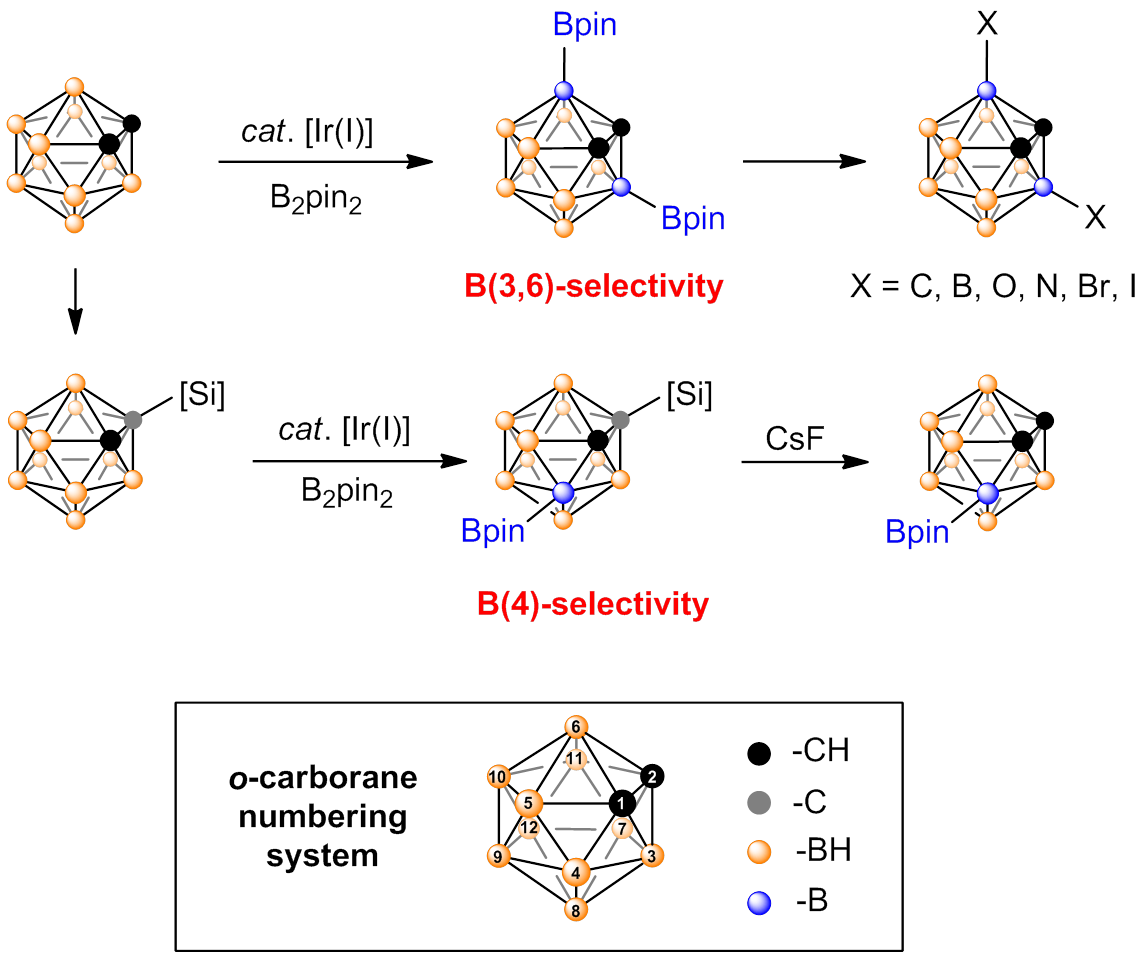Carboranes are carbon-boron molecular clusters, which can be viewed as three-dimensional analogues to benzene. They are finding many applications in medicine as boron neutron capture therapy agents, in supramolecular design as building blocks, and in organometallic chemistry as versatile ligands. Their exceptional thermal and chemical stabilities as well as 3D structures make the functionalization very difficult, in particular, the regioselective functionalization of BH vertex among ten similar B–H bonds. The B(3,6)-disubstituted o-carboranes are generally achieved via multistep reactions of deboration-capping-deboration-capping.
The XIE group from the Shanghai-Hong Kong Joint laboratory in Chemical synthesis, Shanghai Institute of Organic Chemistry (SIOC) of the Chinese Academy of Sciences takes the challenges to develope new methodologies for transition-metal catalyzed selective B–H activation/functionalization of carboranes. In view of that the electron density in o-carborane follows the trend: B(3,6) < B(4,5,7,11) < B(8,10) < B(9,12), the Xie group has previously developed palladium-catalyzed selective B(8,9,10,12)-tetrafluorination (J. Am. Chem. Soc. 2013, 135, 12192) and carboxylic acid directed iridium-catalyzed selective B(4,5)-dialkenylation of o-carboranes (J. Am. Chem. Soc. 2014, 136, 15513). Very recently, they have achieved iridium-catalyzed regioselective B(3,6)-diborylation of carboranes, which has just been published in Nature Commun. (http://www.nature.com/articles/ncomms14827).
Iridium can selectively activate the more electron-deficient cage B(3,6)–H bonds of o-carboranes via oxidative addition pathway in the absence of any directing groups, and catalyze the diborylation using bis(pinacolato)diboron (B2pin2) as a borylation reagent. This protocol serves as a new methodology for catalytic regioselective generation of a series of B(3,6)-diborylated-o-carboranes. On the other hand, catalytic regioselective cage B(4)–H monoborylation in o-carboranes can also be achieved by introducing a bulky TBDMS (tert-butyldimethylsilyl) substituent at the cage C position to completely block the reaction of its ortho-BH vertices. The resultant B-borylated carboranes can be conveniently converted to a variety of functionalized carboranes bearing cage B–X (X = Br, I), B–O, B–C(sp2), B–C(sp3), B–NH2 and B–N3 bonds. This novel strategy opens up a new window for efficient and regioselective functionalization of carboranes via direct B–H activation.

Iridium-catalyzed regioselective borylation of o-carboranes via direct B–H activation (Image by QIU)
This work was financially supported by the National Natural Sciences Foundation of China, Youth Innovation Promotion Association CAS, CAS-Croucher Funding Scheme and NSFC/RGC Joint Research Scheme.
Contact
Author:Zaozao Qiu
Shanghai Institute of Organic Chemistry, CAS
E-mail: qiuzz@sioc.ac.cn

